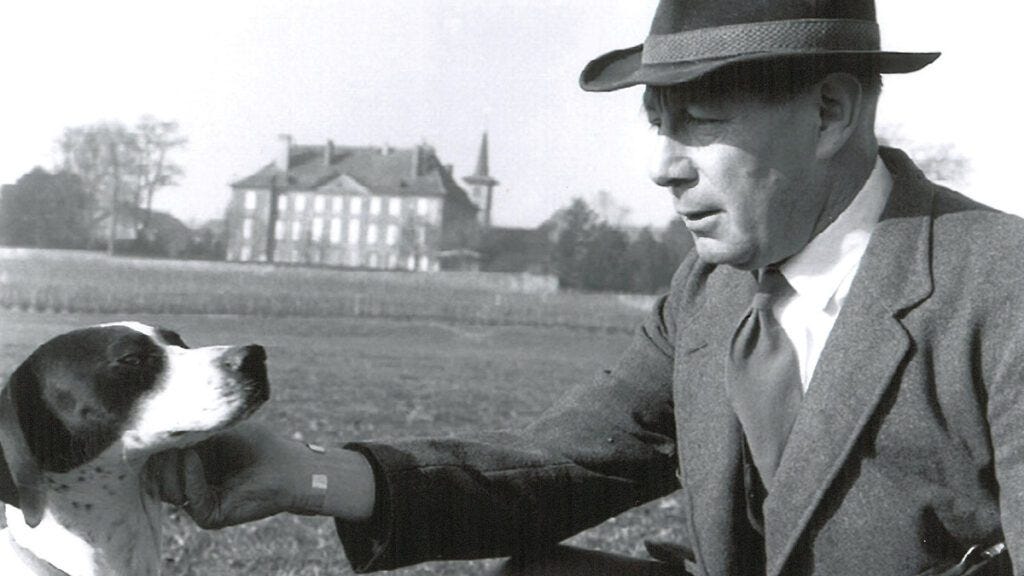Velcro
A Serendipity Story
Serendipity Stories bring the practice of serendipity to life in real-world examples.
In 1941, Swiss engineer George de Mestral returned from a hunting trip in the Alps, frustrated by the burdock burs that had latched onto his clothes and his dog’s fur. While most people would have seen those burs only as an annoyance, de Mestral’s engineer’s mind was instead impressed by their incredible sticking power.
Driven by curiosity, he placed one of the burs under a microscope. What he discovered was fascinating: tiny hooks allowed the burs to catch and hold onto fabric and fur with remarkable tenacity. Rather than dismissing them as only a marvel of nature, de Mestral recognized the potential for something revolutionary. If he could recreate this natural mechanism, he could develop an entirely new way to fasten materials together.
This insight launched nearly a decade of determined experimentation. Working with a French weaver, de Mestral eventually discovered that nylon, when woven into tiny hooks, could create a near-indestructible version of the bur’s natural fastening system. Paired with a specially created looped fabric, it became the hook-and-loop fastener we now know as Velcro—a name that combines the French words “velours” (velvet) and “crochet” (hook).
Initially, Velcro was dismissed. The fashion industry said it was ugly and cheap-looking, and it wasn’t until the 1960s, when NASA began using it to secure items in zero gravity, that it gained popular success.
Today, Velcro’s impact is extraordinary. It’s everywhere—from sneakers and backpacks to sophisticated medical applications. Perhaps most remarkably, it even played a role in the first artificial heart surgery, helping to hold a human heart together. What began as one man’s curious observation of a natural annoyance transformed into an innovation that has touched countless aspects of modern life.
De Mestral’s story reminds us that groundbreaking innovations don’t always come from trying to solve grand challenges. Sometimes, they come from curiosity, inquisitiveness, and simply being open to possibility—from looking at an everyday inconvenience, asking “What if?,” and taking action to create something new.
Make it Yours
De Mestral's story reminds us that groundbreaking innovations don't always come from trying to solve grand challenges. Sometimes, they come from simply being open to possibility - from looking at an everyday inconvenience and asking, "What if?" and then taking action to explore and evolve it.
Start small. Keep a "frustration journal" for a week, noting the little irritations you encounter daily. Then pick one and explore it with genuine curiosity. Research how others handle this problem. Talk to people who face similar challenges. Like de Mestral peering through his microscope, look closer at what's actually happening.
Shifting your mindset from problem-avoider to problem-explorer. Innovation rarely announces itself with fanfare; it whispers through the mundane moments when we're tempted to simply move on. De Mestral could have thrown away those burrs and forgotten about them entirely. Instead, he chose curiosity over convenience.
Your "burr moment" might be just around the corner - waiting in tomorrow's commute, in next week's household chore, or in that recurring workflow hiccup at your job. The question isn't whether opportunities for innovation exist around you - they do. The question is whether you'll recognize them when they stick to you, quite literally, demanding your attention.
Sometimes the most transformative discoveries come not from seeking them out, but from staying alert to what's already trying to teach us something new.
References
Busch, C. (2024). Towards a theory of serendipity: A systematic review and conceptualization.
Cunha, M., Clegg, S., & Mendonça, S. (2010). On serendipity and organizing.
Cunha, M., Rego, A., Clegg, S., & Lindsay, G. (2015). The dialects of serendipity.
de Rond, M. (2014). The Structure of Serendipity. Culture and Organization.
Dew, N. (2024, June). Serendipity in entrepreneurship.
Makri, S., Blandford, A., Woods, M., Sharples, S., & Maxwell, D. (2014). Making my own luck: Serendipity strategies and how to support them in digital information systems.
Napier, N., & Hoang Vuong, Q. (2025, February). Serendipity as a strategic advantage.
Smith, P. and Hilbolling, S. (2025). “Demystifying Serendipity: How Mundane Practices Enable the Identification and Pursuit of Extraordinary Discoveries”, Strategic Organization
Learn more about serendipity and how you can bring the practice of serendipity into your work and life at practiceofserendipity.com.

